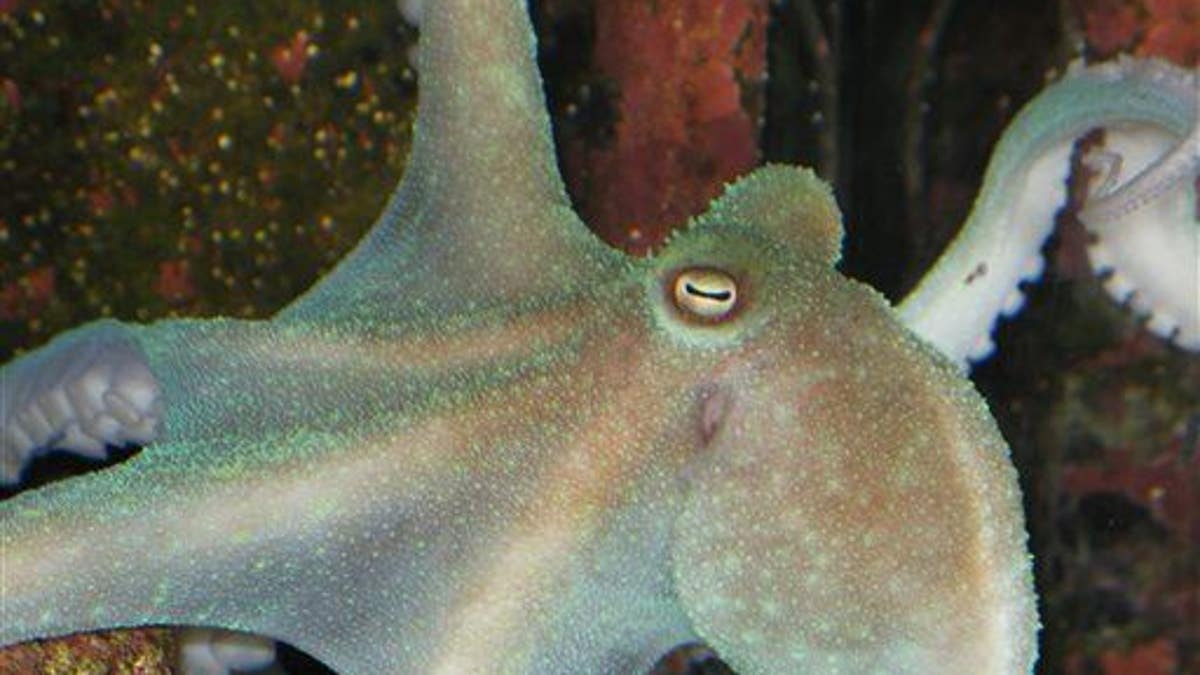
SueNami, a wild caught, male Octopus briareus, displaying green fluorescence. These animals have three hearts, a brain surrounding the esophagus, blue blood, and no bones. (AP Photo/TONMO.com, D Whatley)
Unlike human royalty, a species of octopus that thrives in frigid Antarctic waters has actual blue blood, and scientists think they've figured out its advantage: The key is a blue-hued protein called hemocyanin—which Phys.org notes is comparable to hemoglobin in vertebrates, and which distributes oxygen throughout the body—that makes it not only a literal blue-blooded creature but also uniquely equipped to survive extreme temps on both ends of the spectrum, according to the journal Frontiers in Zoology.
Researchers found hemocyanin is efficient in a range of temperatures, and as one puts its, undergoes "functional changes to improve the supply of oxygen to tissue at sub-zero temperatures." Studying three octopus species, including two from warmer climates for comparison, the researchers found that all pump hemolymph, a blood-like fluid that contains high levels of hemocyanin, reports Discovery.
The octopus in Antarctica, however, has as much as 40% more hemocyanin than the other two species, which puts it among the highest ever reported. And because it transports oxygen between the animal's gills and tissue even more efficiently when temps are above freezing, it's able to tolerate warmer temps associated with climate change far better than other animals in the area, not to mention hang out in relatively warmer shallow waters, unlike most octopuses.
(The octopus also boasts the longest-known brooding period of any animal on the planet.)
This article originally appeared on Newser: Scientists Unlock Key of Octopus's Blue Blood
More From Newser




















